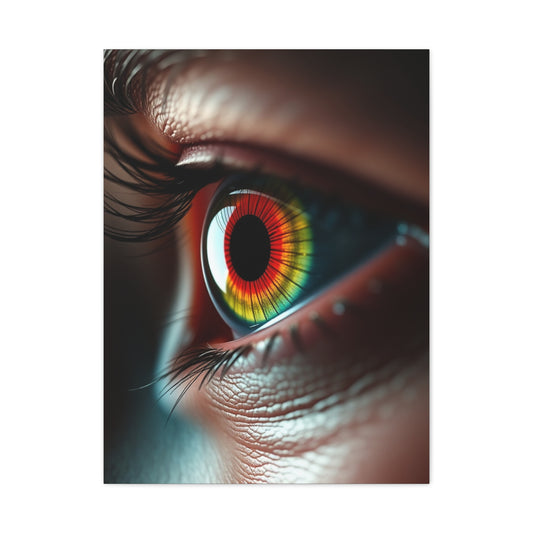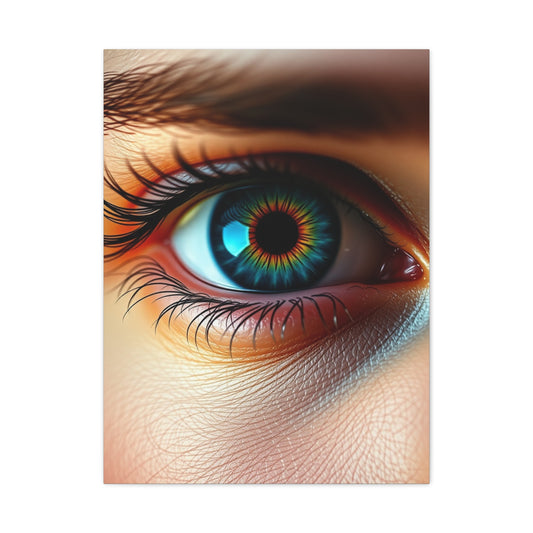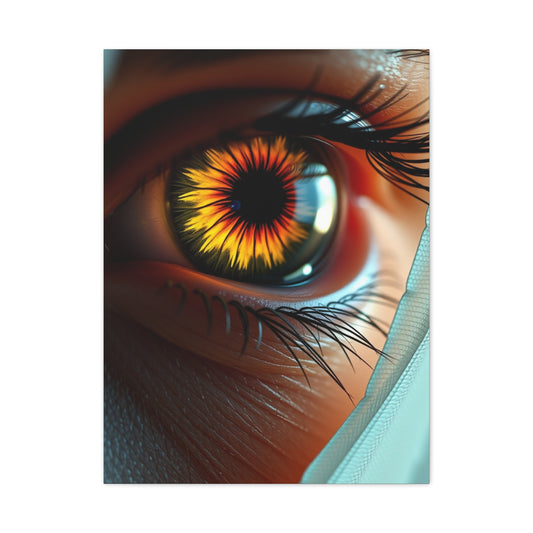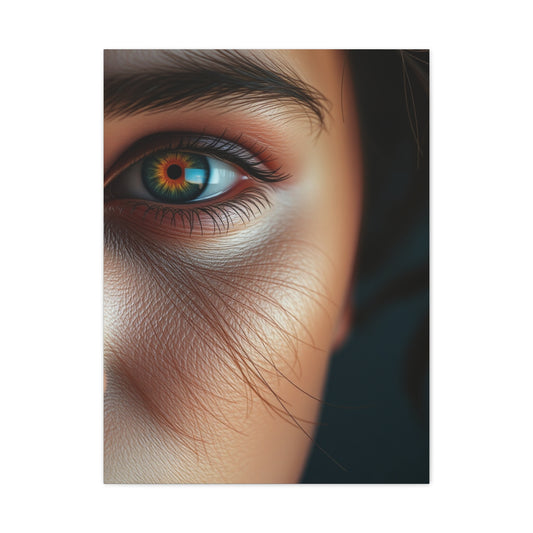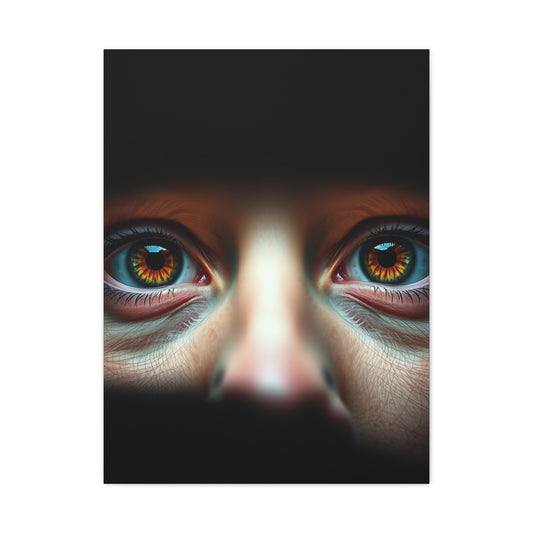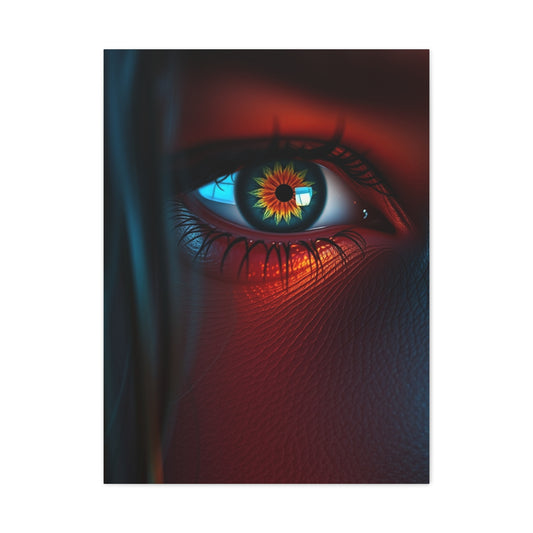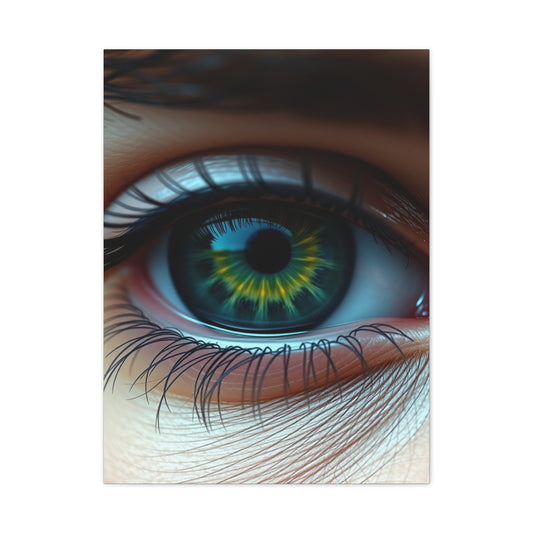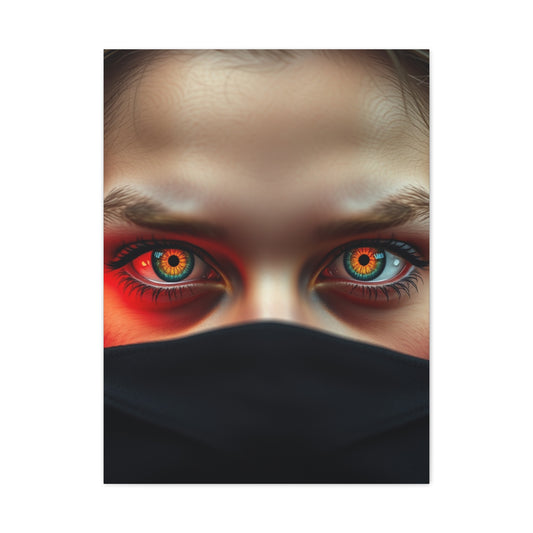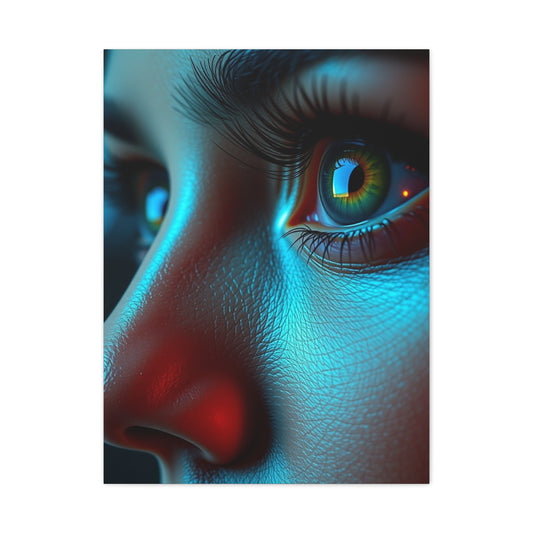A Comprehensive Guide to Ocular Masterpieces With Eyes Wall Art
The mesmerizing allure of ocular imagery has captivated humanity for millennia, transcending cultural boundaries and artistic movements to establish itself as one of the most compelling subjects in visual arts. Eyes wall art represents a profound intersection of anatomical precision, emotional depth, and symbolic significance that resonates with viewers on both conscious and subconscious levels. This comprehensive exploration delves into the multifaceted world of ocular artistic expression, examining its rich heritage, contemporary manifestations, and enduring impact on both creators and admirers.
The human fascination with eyes extends far beyond mere aesthetic appreciation. As the primary organs of sight, eyes serve as conduits between the external world and our inner consciousness, making them natural subjects for artistic interpretation. When translated into wall art, these representations become more than decorative elements; they transform into powerful focal points that command attention, evoke emotion, and stimulate contemplation about the nature of perception, identity, and human connection.
Contemporary eyes wall art encompasses an extraordinary spectrum of styles, mediums, and interpretative approaches. From hyperrealistic paintings that capture every minute detail of the iris to abstract interpretations that distill the essence of vision into geometric forms, artists continue to find innovative ways to explore this timeless subject. The versatility of ocular imagery allows for seamless integration into diverse interior design schemes, making eyes wall art a popular choice for collectors, decorators, and art enthusiasts seeking pieces that combine visual impact with profound meaning.
Historical Foundations of Ocular Artistic Expression
The representation of eyes in art traces back to humanity's earliest creative endeavors, appearing in cave paintings, ancient sculptures, and ritualistic artifacts across virtually every civilization. These early manifestations were not merely artistic exercises but often carried deep spiritual, protective, or symbolic significance within their respective cultures.
Ancient Egyptian civilization provides some of the most iconic examples of ocular symbolism in art. The Eye of Horus, or Wedjat, became one of the most recognizable symbols in human history, representing protection, royal power, and good health. Egyptian artists incorporated eye motifs into tomb paintings, sarcophagi, jewelry, and architectural elements with meticulous attention to both aesthetic and spiritual considerations. The distinctive elongated shape and bold outlines of Egyptian eye representations influenced artistic traditions for centuries, establishing visual conventions that continue to inform contemporary eyes wall art.
Greek and Roman artists approached ocular representation with characteristic emphasis on naturalistic detail and anatomical accuracy. Classical sculptures and frescoes showcased remarkable understanding of eye structure, with artists developing sophisticated techniques for rendering the subtle variations in color, texture, and light reflection that give eyes their lifelike appearance. These classical approaches established foundational principles of realistic eye representation that remain relevant to contemporary artists working in traditional mediums.
Medieval art saw the emergence of deeply symbolic eye imagery, often incorporating religious and mystical themes. The omniscient eye became a recurring motif in illuminated manuscripts, cathedral decorations, and devotional paintings, representing divine watchfulness and spiritual insight. Artists of this period developed distinctive stylistic approaches that prioritized symbolic meaning over naturalistic representation, creating powerful visual metaphors that resonated with contemporary viewers' spiritual beliefs and cultural values.
Renaissance masters revolutionized ocular representation by combining classical precision with innovative techniques and materials. Leonardo da Vinci's anatomical studies of the human eye provided unprecedented understanding of its structure and function, directly influencing artistic approaches to eye representation. Artists like Caravaggio and Rembrandt elevated eye portrayal to new heights of psychological depth, using sophisticated lighting and color techniques to convey complex emotional states and inner experiences through ocular expression.
The Baroque period witnessed dramatic expansion in the expressive possibilities of eye imagery, with artists exploiting bold contrasts, dynamic compositions, and theatrical lighting to create intensely emotional visual experiences. Eyes became focal points for conveying passion, spirituality, and human drama, with masters like Bernini and Rubens demonstrating how subtle variations in ocular expression could transform entire artistic compositions.
Contemporary Manifestations and Artistic Movements
Modern and contemporary art movements have embraced eyes wall art with renewed vigor, exploring its potential through diverse stylistic approaches and conceptual frameworks. Surrealist artists like Salvador Dalí and René Magritte incorporated eye imagery into dreamlike compositions that challenged conventional perceptions of reality and consciousness. These artists recognized the eye's dual nature as both observer and observed, creating works that playfully manipulated scale, context, and meaning to provoke viewers' assumptions about vision and perception.
Pop art movement artists transformed eye imagery into bold, graphic statements that reflected contemporary mass media culture. Andy Warhol's iconic portraits often emphasized enlarged, dramatically rendered eyes that became windows into celebrity culture and consumer society. Roy Lichtenstein's comic book-inspired eye representations demonstrated how traditional artistic subjects could be reimagined through contemporary visual languages and printing techniques.
Abstract expressionist artists approached eye imagery with characteristic emphasis on emotional intensity and gestural expression. Rather than focusing on realistic representation, these artists distilled ocular essence into powerful color combinations, bold brushstrokes, and dynamic compositions that conveyed the emotional and psychological aspects of vision without literal depiction.
Contemporary street art and graffiti culture have embraced eye imagery as a powerful medium for social commentary and urban expression. Muralists and street artists worldwide incorporate oversized eye motifs into public works that address themes of surveillance, social awareness, and collective consciousness. These works often combine traditional artistic techniques with contemporary materials and contexts, creating dialogue between historical eye symbolism and modern social concerns.
Digital art and new media have opened unprecedented possibilities for eye representation, allowing artists to explore dynamic, interactive, and multimedia approaches to ocular imagery. Video installations, projection mapping, and virtual reality experiences have transformed static eye representations into immersive experiences that engage viewers in novel ways, blurring boundaries between observer and observed.
Symbolic Dimensions and Cultural Interpretations
Eyes wall art carries profound symbolic weight across cultures, embodying universal themes while simultaneously reflecting specific cultural values and beliefs. The concept of the "window to the soul" transcends linguistic and cultural boundaries, suggesting that ocular imagery taps into fundamental human experiences of connection, understanding, and empathy.
Protection and surveillance represent recurring themes in eye symbolism, manifesting in various cultural contexts from ancient talismans to contemporary security imagery. The protective eye, found in cultures ranging from ancient Greece to modern Middle Eastern societies, serves as a guardian against negative forces and harmful intentions. This protective symbolism has found expression in contemporary eyes wall art, where oversized ocular representations serve both decorative and symbolic functions within residential and commercial spaces.
Spiritual insight and divine wisdom constitute another major symbolic dimension of eye imagery. Many religious and philosophical traditions associate the eye with higher consciousness, enlightenment, and spiritual awakening. The "third eye" concept, prevalent in Hindu and Buddhist traditions, represents inner vision and transcendental awareness, themes that contemporary artists continue to explore through various interpretative approaches.
Cultural variations in eye symbolism provide rich material for artistic exploration. Japanese artistic traditions emphasize subtle emotional expression through eye representation, while African artistic traditions often incorporate geometric and stylized approaches that emphasize cultural identity and ancestral connections. Contemporary eyes wall art draws upon these diverse cultural traditions, creating works that celebrate both universal human experiences and specific cultural perspectives.
The psychology of eye contact and gaze direction has significant implications for how eyes wall art functions within interior spaces. Research indicates that artwork featuring direct eye contact creates more intense viewer engagement and emotional response compared to works with averted gazes. This psychological dynamic influences how artists compose eye-focused pieces and how collectors select works for specific environments and purposes.
Medium Exploration and Material Considerations
Eyes wall art encompasses an extraordinary range of mediums and materials, each offering unique possibilities for artistic expression and practical considerations for display and maintenance. Traditional painting mediums continue to dominate the field, with oil paints providing unparalleled richness and depth for realistic eye representation. The slow-drying properties of oil paint allow artists to achieve subtle color gradations and detailed texturing that capture the complex interplay of light and shadow within ocular structures.
Acrylic paints offer versatility and durability advantages for contemporary eyes wall art, particularly in environments where rapid completion and long-term stability are priorities. Modern acrylic formulations provide excellent color retention and resistance to environmental factors, making them suitable for both indoor and outdoor installations. Artists working in acrylic can achieve effects ranging from photorealistic detail to bold, graphic statements depending on their stylistic preferences and compositional goals.
Watercolor mediums provide unique opportunities for ethereal and atmospheric eye representations, with the medium's inherent transparency and fluidity lending themselves to dreamy, impressionistic interpretations. Contemporary watercolor artists have developed innovative techniques for controlling the medium's unpredictable qualities while preserving its characteristic spontaneity and luminosity.
Photography-based eyes wall art has gained prominence through both traditional film and digital capture methods. High-resolution digital photography allows for unprecedented detail in eye representation, with macro lenses revealing intricate patterns and textures invisible to casual observation. Contemporary photographers combine traditional portraiture techniques with digital manipulation to create surreal and conceptually rich eye imagery.
Printmaking traditions, including lithography, etching, and screen printing, offer unique possibilities for eyes wall art creation and distribution. These techniques allow artists to create multiple originals while exploring the distinctive visual qualities inherent to each printing method. Contemporary printmakers combine traditional techniques with digital processes to expand their expressive possibilities and reach broader audiences.
Mixed media approaches have become increasingly popular among contemporary artists creating eyes wall art, combining diverse materials and techniques to achieve complex visual and tactural effects. These works might incorporate fabric, metal, glass, or found objects alongside traditional painting or drawing elements, creating three-dimensional pieces that blur boundaries between painting and sculpture.
Sculptural eyes wall art represents a growing category that explores ocular themes through three-dimensional forms. These works range from realistic anatomical representations to abstract interpretations that suggest rather than literally depict eye structures. Materials commonly employed include bronze, stone, glass, and contemporary synthetic materials that offer new possibilities for color, texture, and light interaction.
Digital and new media approaches to eyes wall art encompass everything from computer-generated imagery to interactive installations that respond to viewer presence or movement. These works often explore themes of surveillance, artificial vision, and the intersection between human and machine perception, reflecting contemporary concerns about monitoring and digital consciousness.
Compositional Strategies and Design Principles
Creating compelling eyes wall art requires careful consideration of compositional strategies that maximize visual impact while serving the intended aesthetic and functional purposes. Scale represents one of the most critical decisions artists face when developing ocular imagery, with choices ranging from intimate, life-sized representations to monumental installations that dominate entire wall surfaces.
Oversized eye representations create dramatic focal points that command immediate attention and can transform the character of entire spaces. These large-scale works exploit the natural tendency for human viewers to engage with eye imagery, creating powerful psychological effects that can enhance intimate conversations or contemplative experiences. Artists working at large scales must carefully consider viewing distances and sightlines to ensure that their works remain coherent and impactful from various perspectives.
Intimate-scale eye artwork serves different functions, often encouraging close examination and detailed contemplation. These smaller works can reveal subtle details and nuanced expressions that might be lost at larger scales, creating opportunities for prolonged engagement and discovery. Intimate eye artwork often works effectively in groupings or series that explore variations in expression, color, or compositional approach.
Color selection profoundly influences the emotional impact and aesthetic integration of eyes wall art within interior environments. Natural eye colors ranging from deep browns to vivid blues provide familiar reference points that viewers can easily relate to, while non-naturalistic color choices can create surreal or fantastical effects that challenge conventional expectations.
Warm color palettes incorporating browns, ambers, and golden tones often create inviting and comfortable atmospheres suitable for residential and hospitality environments. These warm-toned eye representations can complement earth-tone interior design schemes while maintaining visual interest and emotional warmth.
Cool color approaches utilizing blues, grays, and silver tones can create more dramatic and contemporary effects suitable for modern architectural environments. Cool-toned eye artwork often appears more abstract and less immediately personal than warm-toned counterparts, making it suitable for commercial and public spaces where universal appeal is prioritized over intimate connection.
Monochromatic approaches to eye representation offer opportunities for sophisticated tonal studies that emphasize form, texture, and light rather than color relationships. Black and white eye artwork can achieve timeless elegance while maintaining strong visual impact across diverse interior design contexts.
Compositional frameworks for eyes wall art range from traditional portrait orientations to innovative arrangements that challenge conventional expectations. Vertical compositions naturally complement the human figure and work well in residential and commercial spaces with standard ceiling heights. Horizontal formats can create panoramic effects suitable for wide wall surfaces and contemporary architectural environments.
Asymmetrical compositions can create dynamic visual tension that enhances viewer engagement while providing opportunities for innovative integration with architectural features and adjacent artworks. These approaches require careful balance to avoid creating visual chaos while maintaining compositional coherence and aesthetic appeal.
Multiple-panel approaches allow artists to explore sequential narratives or comparative studies that reveal different aspects of ocular expression and meaning. Diptychs and triptychs can create dialogue between different eyes, expressions, or time periods while maintaining overall compositional unity through shared color schemes, styles, or thematic content.
Interior Design Integration and Spatial Considerations
Successfully integrating eyes wall art into interior environments requires careful consideration of spatial relationships, lighting conditions, and overall design coherence that enhances rather than overwhelms existing architectural and decorative elements. The powerful visual impact of eye imagery demands thoughtful placement and proportional relationships that create harmony between artwork and environment.
Residential environments offer intimate settings where eyes wall art can create personal connections and emotional resonance for daily occupants and occasional visitors. Living room placements often benefit from eye artwork that encourages conversation and contemplation, with viewing angles and seating arrangements that allow for comfortable extended observation. The psychological impact of eye imagery should be considered in bedroom applications, where some individuals might find direct eye contact disturbing during rest periods while others appreciate the sense of protection and watchfulness that eye imagery can provide.
Dining room environments can benefit from eye artwork that enhances social interaction and conversation, with placement considerations that avoid creating uncomfortable dynamics during meal times. The social psychology of eye contact influences how eye artwork functions in communal spaces, with careful attention to gaze direction and intensity affecting the overall atmosphere of shared experiences.
Commercial environments present different considerations for eyes wall art integration, with emphasis on creating welcoming yet professional atmospheres that serve business functions while maintaining aesthetic appeal. Reception areas and waiting rooms can benefit from eye artwork that creates visual interest without being overly intimate or psychologically intense for visitors who may already be experiencing stress or anxiety.
Retail environments increasingly incorporate eye imagery to create memorable brand experiences and enhance customer engagement. Large-scale eye installations can serve as focal points that organize traffic flow and create Instagram-worthy moments that extend marketing reach through social media sharing. The commercial use of eye imagery requires careful balance between visual impact and commercial functionality.
Restaurant and hospitality environments offer opportunities for eye artwork that enhances dining experiences and creates distinctive atmosphere. The dining psychology research indicates that eye imagery can influence appetite, conversation patterns, and overall comfort levels, making thoughtful selection and placement crucial for successful commercial integration.
Healthcare environments present unique considerations for eye artwork, with potential for both positive and negative psychological impacts depending on implementation. While eye imagery can provide comfort and human connection in clinical settings, it can also trigger anxiety or discomfort in some patients, requiring careful consideration of placement and style choices.
Lighting considerations play crucial roles in how eyes wall art functions within interior environments. Natural lighting conditions change throughout the day, affecting color perception, shadow patterns, and overall visual impact of eye artwork. Artists and designers must consider how their works will appear under different lighting conditions and times of day.
Artificial lighting systems offer opportunities to enhance eye artwork through strategic illumination that emphasizes texture, color, and dimensional qualities. Track lighting, picture lights, and architectural lighting can be designed to complement eye artwork while avoiding glare or reflection problems that might interfere with viewing experiences.
Scale relationships between eye artwork and surrounding architectural elements significantly influence visual impact and spatial harmony. Oversized eye artwork can overwhelm small spaces while appearing insignificant in large architectural environments, requiring careful proportional analysis during selection and placement processes.
Color Theory and Emotional Resonance
Color selection in eyes wall art profoundly influences emotional impact, psychological associations, and aesthetic integration within interior environments. The complex interplay between iris colors, surrounding color palettes, and lighting conditions creates opportunities for subtle or dramatic emotional manipulation that enhances the overall viewer experience.
Natural eye color variations provide rich palettes for artistic exploration, with each color family carrying distinctive emotional associations and aesthetic qualities. Brown eyes, the most common natural eye color globally, often convey warmth, stability, and earthiness that complement natural materials and earth-tone interior design schemes. Artists working with brown eye imagery can explore variations ranging from light amber to deep chocolate tones that offer subtle emotional modulations within familiar parameters.
Blue eyes create cooler emotional impressions often associated with clarity, intelligence, and ethereal beauty. The relative rarity of natural blue eyes contributes to their perceived specialness and visual impact in artistic contexts. Artists can exploit the full range of blue variations from pale sky tones to deep sapphire hues, each carrying distinctive emotional connotations and aesthetic possibilities.
Green eyes, the rarest natural eye color, offer unique opportunities for creating distinctive and memorable artistic statements. The associations between green eyes and mystery, nature, and supernatural qualities provide rich symbolic material for artists exploring themes of otherworldliness, environmental connection, and mystical experience.
Hazel eyes, with their complex mixture of colors and patterns, challenge artists to capture subtle variations and transitions that change under different lighting conditions. These multi-tonal eyes offer opportunities for sophisticated color studies that reward close examination and prolonged engagement.
Non-naturalistic color approaches to eye artwork open unlimited possibilities for emotional expression and aesthetic innovation. Purple, pink, gold, and silver eye colorations can create fantastical or futuristic effects that transport viewers beyond ordinary reality into imaginative realms limited only by artistic vision and technical capability.
Monochromatic approaches to eye artwork eliminate color distraction to focus attention on form, texture, and tonal relationships. Black and white eye images can achieve classical elegance while emphasizing the sculptural qualities of ocular anatomy and the play of light and shadow across three-dimensional forms.
Color temperature considerations significantly influence the emotional impact of eye artwork, with warm color palettes creating inviting and comfortable atmospheres while cool palettes suggest distance, sophistication, or otherworldliness. Artists can manipulate color temperature to achieve specific emotional effects that complement intended viewing environments and audience responses.
Complementary color relationships can create visual tension and energy in eye artwork, with contrasting colors enhancing perceived vibrancy and visual impact. These high-contrast approaches work effectively in contemporary environments where bold visual statements are desired.
Analogous color schemes create harmonious and soothing effects that work well in residential and hospitality environments where relaxation and comfort are priorities. These color relationships can create sophisticated tonal studies that reward careful observation while maintaining overall visual tranquility.
Color saturation levels significantly influence perceived intensity and emotional impact, with highly saturated colors creating bold, energetic effects while desaturated palettes suggest subtlety, sophistication, and contemplative quietness. Artists can modulate saturation levels to achieve precise emotional effects that serve specific aesthetic and functional purposes.
The interaction between eye colors and surrounding color palettes creates opportunities for sophisticated artistic relationships that enhance overall compositional coherence. Complementary background colors can make eye colors appear more vivid, while analogous relationships create harmonious integration that emphasizes overall unity rather than dramatic contrast.
Artistic Techniques and Material Mastery
Mastering the artistic representation of eyes requires understanding sophisticated technical approaches that capture both the anatomical complexity and emotional expressiveness of ocular structures. These techniques vary significantly across different mediums and artistic styles, offering diverse pathways for achieving compelling and effective eye imagery.
Traditional drawing approaches to eye representation begin with understanding fundamental anatomical proportions and structural relationships that inform realistic depiction. The human eye occupies approximately one-fifth of the overall facial width, with specific proportional relationships between the various components including the iris, pupil, tear ducts, and surrounding musculature that affect overall appearance and expression.
Shading techniques for eye representation require sophisticated understanding of how light interacts with the complex curved surfaces and translucent materials that compose ocular anatomy. The cornea's convex surface creates distinctive highlight patterns that must be accurately rendered to achieve convincing three-dimensional effects, while the iris presents complex radial patterns that require careful observation and technical skill to reproduce effectively.
Painting techniques for eye representation vary significantly between different mediums, each offering unique advantages and challenges for achieving specific aesthetic goals. Oil painting techniques allow for subtle color blending and detailed rendering that can capture the complex interplay of reflected and transmitted light within eye structures. The slow-drying properties of oil paint enable artists to work and rework areas to achieve precise color matching and smooth transitions.
Acrylic painting techniques require different approaches due to the medium's faster drying time and different handling characteristics. Artists working in acrylic must plan color mixtures and application sequences more carefully while taking advantage of the medium's ability to create both transparent glazes and opaque covering power within single compositions.
Watercolor techniques for eye representation exploit the medium's transparency and fluidity to create ethereal and atmospheric effects that can suggest rather than literally depict ocular structures. Wet-on-wet techniques can create soft, dreamlike iris patterns while controlled wet-on-dry applications allow for precise detail work in areas requiring sharp definition.
Pastel techniques combine drawing and painting approaches, offering unique possibilities for achieving both linear precision and soft atmospheric effects within single compositions. The granular texture of pastel media can effectively suggest the complex surface textures of eye components while allowing for smooth color transitions and subtle modeling.
Digital painting techniques have revolutionized possibilities for eye representation, offering unlimited color palettes, perfect blending capabilities, and the ability to easily experiment with different approaches without material costs or time commitments. Digital artists can exploit layer-based working methods to build complex color relationships and textural effects that would be difficult or impossible to achieve with traditional materials.
Photographic approaches to eye imagery benefit from understanding both portraiture techniques and macro photography principles that enable extreme close-up documentation of eye structures. Lighting becomes particularly critical in eye photography, with careful control of reflection patterns and shadow placement necessary to reveal structural details while avoiding distracting glare or deep shadows.
Mixed media approaches combine multiple techniques and materials to achieve effects impossible with single mediums. These approaches might incorporate traditional drawing and painting with collage elements, found objects, or digital manipulation to create complex layered compositions that reward extended examination and interpretation.
Sculptural approaches to eye representation present unique three-dimensional challenges that require understanding of form, volume, and spatial relationships rather than purely surface appearance. Sculptors must consider how their works will appear from multiple viewing angles while maintaining anatomical accuracy and expressive power.
Collecting and Curation Strategies
Building a meaningful collection of eyes wall art requires strategic thinking about aesthetic goals, space requirements, budget considerations, and long-term collecting objectives that enhance both personal satisfaction and potential investment value. Successful collecting involves balancing emotional appeal with practical considerations that ensure sustainable and rewarding collecting experiences.
Developing a collecting focus helps create coherence and depth within eyes wall art collections while providing direction for future acquisition decisions. Some collectors concentrate on specific time periods, artistic movements, or cultural traditions that offer rich opportunities for specialized expertise development. Others prefer thematic approaches that explore different aspects of eye symbolism, expression, or representation across diverse artistic contexts.
Artist-focused collecting strategies build comprehensive representations of individual artists' exploration of eye imagery over time, providing opportunities to observe artistic development and thematic evolution within coherent bodies of work. These approaches often offer both aesthetic satisfaction and potential investment benefits as artist recognition and market values develop.
Medium-based collecting allows for deep exploration of specific artistic techniques and materials, comparing how different artists approach similar subjects using shared technical constraints and possibilities. Photography collectors might focus on eye imagery across different periods and styles, while painting collectors could explore variations within specific mediums like oil, acrylic, or watercolor.
Scale considerations significantly influence collecting strategies, with decisions about available display space affecting both acquisition choices and long-term collection development. Collectors with limited wall space might focus on smaller, intimate works that can be displayed in groupings, while those with generous display areas can consider larger statement pieces that require dedicated placement.
Budget planning enables sustainable collecting practices that build meaningful collections over time without financial strain. Entry-level collectors might begin with prints, photographs, or works by emerging artists while gradually developing expertise and resources for higher-value acquisitions. Understanding market dynamics and pricing structures helps collectors make informed decisions about timing and value.
Authentication and provenance research protect collectors from fraud while ensuring acquisition of genuine works with clear ownership histories. Working with reputable dealers, galleries, and auction houses provides access to properly documented works while reducing risks associated with questionable or disputed attributions.
Conservation considerations affect long-term collection value and enjoyment, with proper storage, display, and maintenance practices protecting artworks from deterioration while preserving both aesthetic appeal and financial value. Understanding conservation requirements for different mediums and age periods helps collectors make informed decisions about acquisition and care.
Documentation and cataloging practices create permanent records that enhance collection management while providing valuable information for insurance, estate planning, and eventual disposition decisions. Professional photography, detailed condition reports, and comprehensive provenance records contribute to both personal enjoyment and potential future sale value.
Display rotation strategies maximize collection enjoyment while protecting artworks from excessive light exposure and environmental stress. Planning storage and rotation systems allows collectors to enjoy larger collections than wall space might normally accommodate while ensuring proper conservation practices.
Insurance considerations protect collections against loss, theft, or damage while providing peace of mind for significant investments. Working with specialized fine art insurance providers ensures appropriate coverage levels and claims procedures tailored to art collecting rather than general property protection.
Market Dynamics and Investment Considerations
The eyes wall art market encompasses diverse segments ranging from affordable prints to museum-quality masterpieces, with pricing structures influenced by factors including artist reputation, artistic merit, rarity, condition, and market demand patterns. Understanding these market dynamics enhances collecting decisions while providing insight into potential investment aspects of art acquisition.
Primary market transactions involve direct purchases from artists, galleries, or authorized dealers representing new works entering the market for the first time. These purchases often provide opportunities for collector relationships with artists while supporting continued creative production. Primary market pricing typically reflects production costs, artist reputation, and gallery overhead rather than speculative investment considerations.
Secondary market activities encompass resales of previously owned artworks through auction houses, galleries, and private dealers. Secondary market pricing reflects broader market forces including supply and demand dynamics, changing artistic reputations, and overall economic conditions that affect art market participation and spending patterns.
Auction house results provide valuable market data for understanding price trends and comparative values across different artists, periods, and quality levels. Major auction houses regularly feature eyes-themed artwork across diverse categories, from Old Master paintings to contemporary photography, providing benchmark pricing information for collectors and dealers.
Emerging artist markets offer opportunities for collectors to acquire works by promising creators whose reputations and market values may appreciate significantly over time. These investments require careful research and risk assessment, as emerging artist markets can be volatile and unpredictable compared to established artist segments.
Blue-chip artist markets, representing work by highly established creators with strong auction records and museum representation, typically offer more stable value appreciation potential but require significantly higher initial investments. These markets often feature eyes-themed works by major artists whose overall market recognition extends beyond specific subject matter.
Photography markets have experienced significant growth and recognition over recent decades, with eye-focused photography achieving recognition in both aesthetic and investment contexts. Contemporary photographers working with eye imagery have achieved significant market success, creating new collecting categories and investment opportunities.
Print markets offer accessible entry points for collectors interested in eyes wall art without substantial financial commitments. Limited edition prints by recognized artists can provide aesthetic satisfaction while maintaining modest investment potential, particularly for works that become sought-after as artist recognition develops.
Geographic market variations affect pricing and availability, with different regions showing varying appreciation for specific artistic styles, cultural perspectives, and subject matter approaches. Understanding these regional differences can inform collecting strategies and timing for both acquisitions and potential sales.
Economic cycles significantly influence art market dynamics, with broader economic conditions affecting both collector spending patterns and overall market liquidity. Understanding these cyclical patterns helps collectors time major acquisitions and disposition decisions for optimal financial outcomes.
Authentication and attribution issues significantly impact market values, with properly attributed and authenticated works commanding premium prices while questionable or disputed works face significant value discounts. Professional opinion and scholarly consensus play crucial roles in establishing and maintaining market confidence in specific works or artists.
Conservation and Preservation Practices
Proper conservation and preservation of eyes wall art ensures long-term aesthetic quality and value retention while protecting artworks from environmental damage and natural deterioration processes. Understanding conservation principles helps collectors, institutions, and custodians make informed decisions about care and maintenance practices that balance access with preservation goals.
Environmental control represents the foundation of effective art conservation, with temperature and humidity stability preventing many common forms of artwork deterioration. Eyes wall art created with different materials and techniques requires specific environmental conditions, with paintings, photographs, and works on paper each having optimal ranges for temperature, humidity, and air quality.
Light exposure management protects artworks from photochemical damage while enabling appropriate viewing experiences. Ultraviolet radiation poses particular threats to organic materials including paper, canvas, and many pigments, requiring careful filtering of both natural and artificial light sources. LED lighting systems offer conservation advantages through reduced heat production and precise spectral control.
Physical protection strategies prevent mechanical damage from handling, vibration, and accidental impact while maintaining accessibility for viewing and study. Professional mounting, framing, and display systems provide both physical protection and aesthetic presentation that enhances rather than detracts from artwork appearance.
Cleaning and maintenance procedures require specialized knowledge and techniques that vary significantly across different artistic mediums and materials. Professional conservators possess training and experience necessary for safely removing dirt, stains, and other contaminants without causing damage to original materials or artistic intent.
Documentation and condition reporting create permanent records of artwork condition that inform conservation decision-making while providing valuable historical information for future researchers and caretakers. Photography, written descriptions, and technical analysis contribute to comprehensive understanding of artwork composition and condition over time.
Preventive conservation practices focus on eliminating or minimizing risk factors that contribute to artwork deterioration rather than treating damage after it occurs. These approaches often provide more cost-effective and less invasive protection compared to interventive treatments that attempt to reverse existing damage.
Storage considerations protect artworks during periods when they are not on display, with proper storage systems preventing damage while maintaining accessibility for periodic inspection and rotation. Climate-controlled storage areas with appropriate shelving, padding, and protective wrapping ensure long-term preservation.
Transportation and handling protocols minimize risks during movement of artworks between locations, whether for exhibition, loan, or relocation purposes. Professional art handling services possess specialized equipment and expertise necessary for safe transportation of valuable and fragile artworks.
Insurance and risk management strategies protect collections against unforeseen events including natural disasters, theft, and accidental damage. Comprehensive risk assessment identifies potential threats while informing prevention strategies that reduce likelihood and severity of potential losses.
Emergency preparedness plans establish procedures for protecting artworks during natural disasters, security breaches, or other crisis situations. These plans should include evacuation procedures, emergency contact information, and recovery protocols that prioritize both human safety and collection protection.
Regional Variations and Global Movements
Geographic variations in eyes wall art reflect distinctive cultural values, aesthetic traditions, and social contexts that shape artistic production and reception across different regions and communities. Understanding these regional differences enhances appreciation for the global diversity of approaches to ocular artistic expression.
European artistic traditions continue to influence contemporary eyes wall art through institutional support, gallery systems, and educational programs that maintain connections between historical precedents and contemporary innovation. Major European art centers including London, Paris, Berlin, and Amsterdam host significant exhibitions and collections that showcase both historical and contemporary eye-focused artwork.
North American eye art scenes encompass diverse regional variations, from New York's commercial gallery system to Los Angeles's experimental multimedia approaches to regional centers that support local artistic communities. The influence of indigenous North American artistic traditions brings unique perspectives on the relationship between human and natural vision.
Latin American artists bring distinctive cultural perspectives to eye imagery, drawing upon indigenous traditions, colonial histories, and contemporary social movements that inform approaches to identity, spirituality, and political expression. Magical realism influences in Latin American art create unique possibilities for eye imagery that blurs boundaries between reality and imagination.
Asian artistic traditions offer rich alternatives to Western approaches to eye representation, with philosophical frameworks that emphasize harmony, balance, and interconnectedness rather than individual expression or psychological penetration. Contemporary Asian artists working with eye imagery often synthesize traditional aesthetics with contemporary concerns.
African artistic traditions encompass extraordinary diversity in eye representation, from ancient Egyptian influences to contemporary urban art movements that address postcolonial identity and globalization impacts. Contemporary African artists working with eye imagery bring unique perspectives on community, spirituality, and social change.
Middle Eastern artistic traditions navigate complex relationships between figurative representation and religious restrictions, with artists developing innovative approaches that honor cultural values while exploring contemporary themes. The rich tradition of geometric and calligraphic art provides distinctive frameworks for incorporating eye imagery.
Therapeutic and Healing Applications
Eyes wall art increasingly finds applications in therapeutic and healing contexts, with healthcare providers, therapists, and wellness practitioners recognizing the potential benefits of ocular imagery for promoting emotional wellbeing, social connection, and psychological healing. Understanding these therapeutic dimensions expands appreciation for how artistic expression intersects with human health and recovery processes.
Healthcare environment integration of eyes wall art requires careful consideration of patient populations, treatment contexts, and therapeutic goals that inform selection and placement decisions. Pediatric facilities might benefit from friendly, colorful eye imagery that reduces anxiety while adult treatment areas might require more sophisticated approaches that provide comfort without childishness.
Art therapy practices increasingly incorporate eye imagery into treatment programs designed to address issues related to identity, relationships, self-esteem, and emotional expression. Creating eye artwork provides opportunities for clients to explore their own perceptions and experiences while developing artistic skills and creative confidence.
Trauma recovery contexts have found eyes wall art effective for addressing issues related to trust, vulnerability, and social connection that often arise during healing processes. Carefully selected eye imagery can provide sense of companionship and understanding while avoiding triggering responses in sensitive populations.
Mental health applications recognize the potential for eye imagery to promote positive emotional states, reduce isolation, and encourage social engagement among individuals experiencing depression, anxiety, or other psychological challenges. The sense of connection inherent in eye contact can be preserved and accessed through thoughtfully selected artwork.
Dementia care environments benefit from eye artwork that provides familiar and comforting imagery capable of maintaining emotional connections even as cognitive function declines. Large, clear eye images can serve as focal points for orientation and recognition while providing emotional comfort.
Meditation and mindfulness practices sometimes incorporate eye imagery as focal points for contemplation and spiritual development. The concept of inner vision and third eye awareness from various spiritual traditions informs how eye artwork functions in contemplative contexts.
Rehabilitation settings use eye artwork to create encouraging and humanistic environments that support recovery and healing processes. The sense of being seen and understood conveyed by appropriate eye imagery can enhance therapeutic relationships and treatment outcomes.
Conclusion
Eyes wall art represents a remarkable confluence of artistic tradition, cultural meaning, and human psychology that continues to evolve through technological innovation and cultural change. From ancient protective symbols to contemporary digital installations, ocular imagery has maintained its power to captivate, inspire, and connect across diverse contexts and communities. The enduring fascination with eyes in art reflects fundamental aspects of human experience—our need for connection, understanding, and recognition that transcends individual differences and cultural boundaries.
The comprehensive exploration of eyes wall art reveals the extraordinary depth and complexity inherent in this seemingly simple subject matter. The technical mastery required to capture the anatomical precision of ocular structures, combined with the emotional sensitivity necessary to convey psychological depth and cultural meaning, places eyes wall art among the most challenging and rewarding forms of artistic expression. Artists working in this field must navigate complex relationships between representation and interpretation, universal themes and cultural specificity, traditional techniques and contemporary innovation.
The psychological impact of eyes wall art extends far beyond aesthetic appreciation, engaging fundamental human responses to social connection and visual communication that operate at both conscious and unconscious levels. Understanding these psychological mechanisms enhances appreciation for why eye imagery creates such powerful emotional responses while informing practical decisions about selection, placement, and integration within diverse environments. The ability of eye artwork to create sense of presence, companionship, and emotional connection makes it particularly valuable in contemporary society where digital communication often lacks the nuanced emotional content of face-to-face interaction.
Cultural dimensions of eyes wall art reflect the rich diversity of human approaches to vision, perception, and social meaning, with different traditions bringing unique perspectives and aesthetic strategies to ocular representation. The global nature of contemporary art markets has created unprecedented opportunities for cross-cultural dialogue and artistic exchange, leading to innovative approaches that synthesize diverse cultural perspectives while addressing universal human themes. This cultural diversity enriches the field while challenging artists and audiences to expand their understanding of how different communities conceptualize vision and its symbolic significance.
The practical aspects of collecting, displaying, and maintaining eyes wall art require careful consideration of multiple factors ranging from aesthetic goals to conservation requirements. Successful integration of eye artwork into interior environments depends on understanding spatial relationships, lighting conditions, and psychological dynamics that influence viewer experience and emotional response. The growing recognition of art's therapeutic potential has expanded applications for eyes wall art beyond traditional aesthetic contexts into healthcare, wellness, and healing environments where careful selection and placement can contribute to positive outcomes.
Market dynamics and investment considerations reflect the maturation of eyes wall art as a recognized collecting category, with established pricing structures and appreciation patterns that inform both aesthetic and financial decision-making. The emergence of new technologies and artistic approaches continues to create opportunities for innovation and market development while raising questions about traditional concepts of authenticity, authorship, and artistic value.
Conservation and preservation challenges require ongoing attention to environmental factors, material stability, and changing display technologies that affect long-term artwork survival and accessibility. The investment in proper conservation practices ensures that significant works remain available for future generations while maintaining both aesthetic quality and market value over time.
Looking toward the future, eyes wall art stands positioned to benefit from continued technological innovation, expanding cultural awareness, and growing understanding of art's role in human wellbeing and social connection. The emergence of interactive technologies, sustainable materials, and personalized approaches promises new directions for artistic exploration while maintaining connection to the fundamental human experiences that have made eye imagery compelling throughout history.
The therapeutic applications of eyes wall art represent particularly promising areas for future development, with healthcare providers, educators, and social service organizations recognizing the potential benefits of thoughtfully selected and placed ocular imagery for promoting healing, learning, and community building. As research continues to document the positive impacts of art exposure on human health and development, eyes wall art may find expanding applications in contexts far beyond traditional aesthetic appreciation.
The global nature of contemporary culture ensures that eyes wall art will continue to evolve through cross-cultural exchange and technological innovation while maintaining its essential connection to fundamental human needs for recognition, understanding, and emotional connection. The universality of eye imagery across cultures, combined with the infinite possibilities for personal and cultural interpretation, ensures that this artistic tradition will continue to provide rich material for creative exploration and meaningful human connection.
In conclusion, eyes wall art represents a unique intersection of artistic skill, cultural meaning, psychological insight, and human connection that offers both creators and audiences opportunities for profound engagement and personal enrichment. Whether serving as focal points for intimate residential spaces, dramatic statements in public environments, or therapeutic tools in healing contexts, eye imagery continues to demonstrate its remarkable power to transcend boundaries between art and life, observer and observed, individual and universal experience. The future of this artistic tradition promises continued innovation and expansion while maintaining its essential connection to the timeless human fascination with vision, perception, and the profound mystery of consciousness itself.

